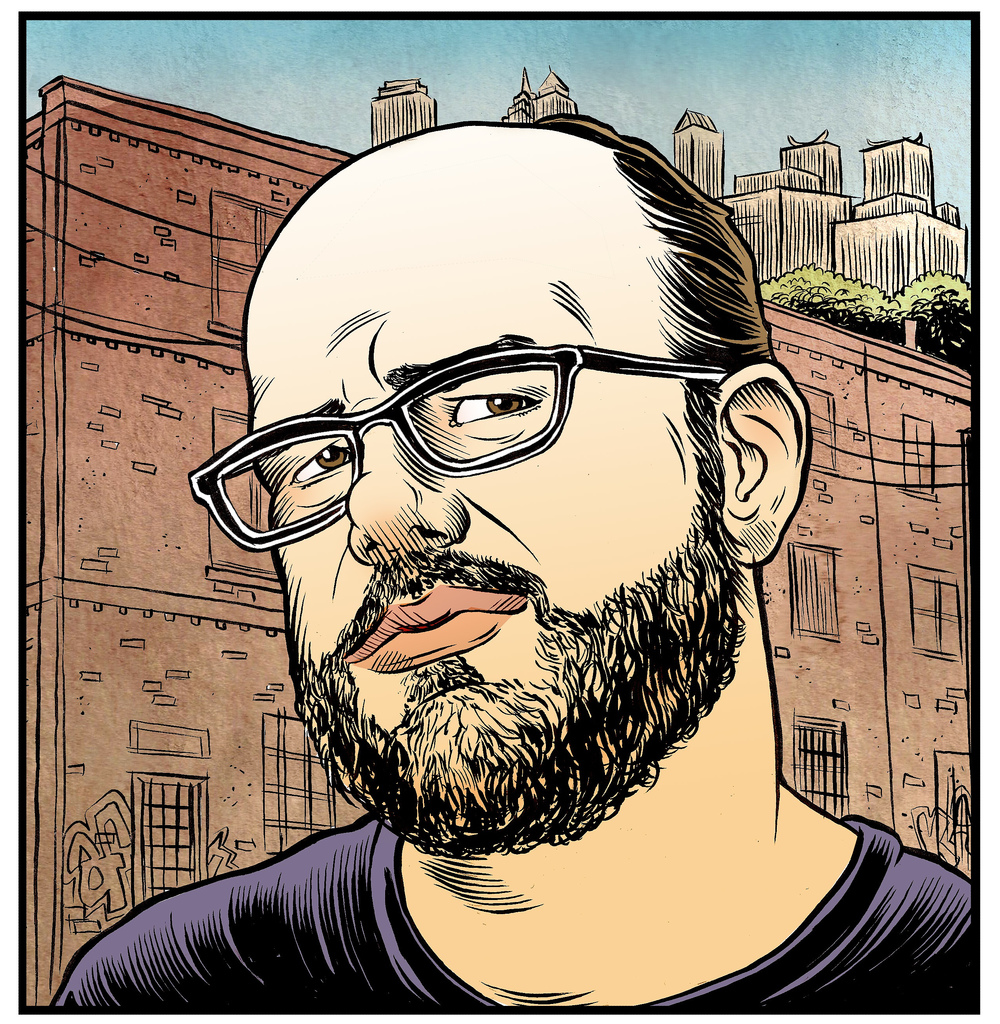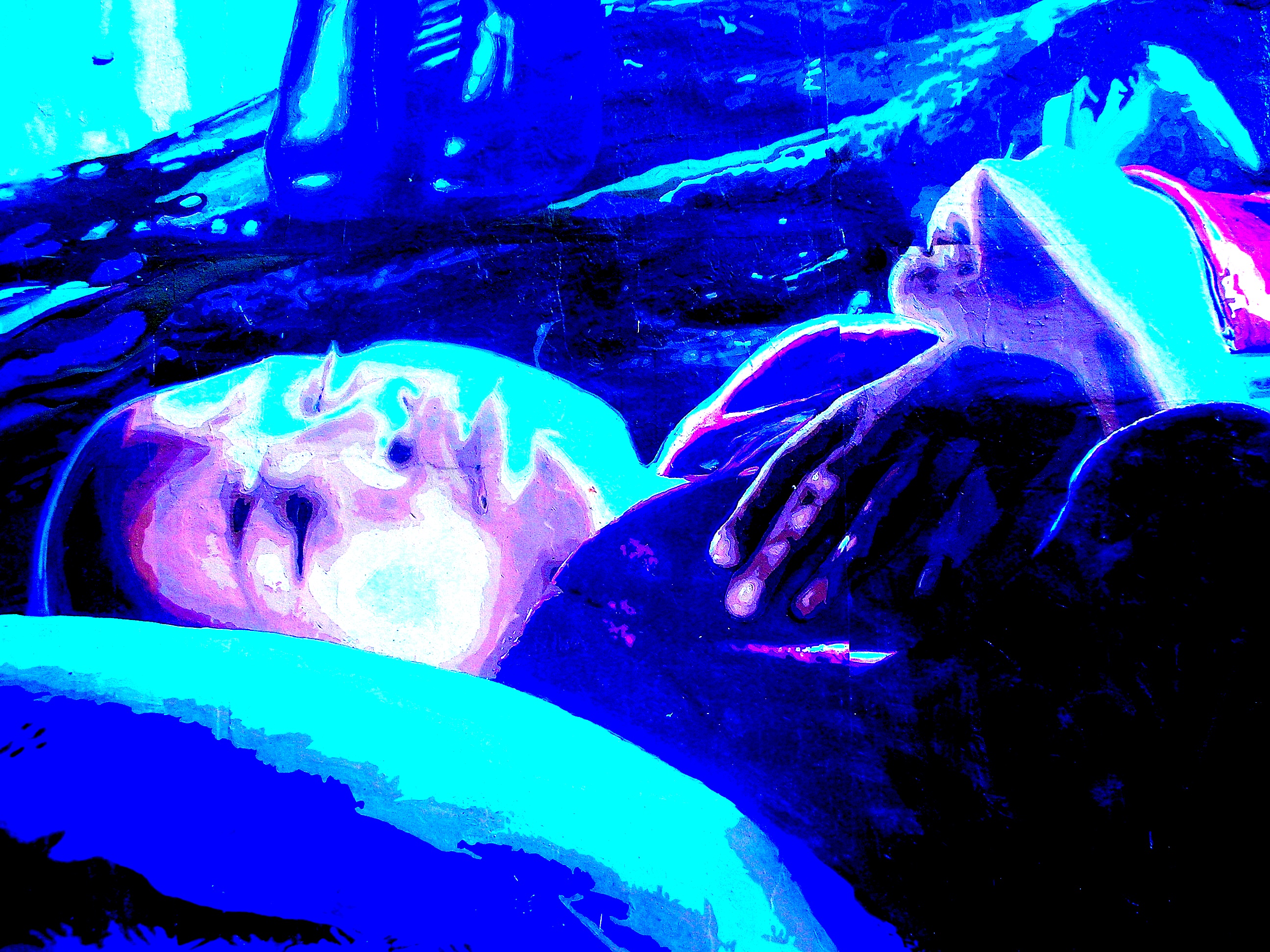[Photo by JONATHAN VALANIA]
 BY JEFF DEENEY The best news Ed Bisch ever read was splashed across the front pages of newspapers everywhere last week: “In Guilty Plea, OxyContin Maker to Pay $600 Million.” You see, Purdue Pharma, OxyContin’s manufacturer, is Ed Bisch’s white whale. Some say he’s obsessed. He can explain why. Six years ago Ed discovered his son, Eddie Jr., dead in his Fishtown bed. After finding Eddie’s body, Ed set out to confront his son’s friends and find out what had happened. He found them congregated on the same Cumberland Street stoop where they always gathered, even in the middle of February, in front of a dingy laundromat. It was as good a place as any to hang out for a group of teens who grew up on a street small enough to spit across, tightly packed with red brick row homes.
BY JEFF DEENEY The best news Ed Bisch ever read was splashed across the front pages of newspapers everywhere last week: “In Guilty Plea, OxyContin Maker to Pay $600 Million.” You see, Purdue Pharma, OxyContin’s manufacturer, is Ed Bisch’s white whale. Some say he’s obsessed. He can explain why. Six years ago Ed discovered his son, Eddie Jr., dead in his Fishtown bed. After finding Eddie’s body, Ed set out to confront his son’s friends and find out what had happened. He found them congregated on the same Cumberland Street stoop where they always gathered, even in the middle of February, in front of a dingy laundromat. It was as good a place as any to hang out for a group of teens who grew up on a street small enough to spit across, tightly packed with red brick row homes.
“What did he take last night? Don’t lie. Just tell me. I need to know.”
Eddie’s friends looked at one another and decided to spill it. They could tell Ed wasn’t messing around.
“Oxy. He took Oxy at a party last night.”
“Oxy? What’s Oxy? What is that?”
Ed didn’t know, had no reason to know, that OxyContin was all the rage among Fishtown teens in 2001. It was the new party drug, making the rounds with curious kids the way Ecstasy had a few years before. Ed didn’t know the drug was so freely available; his son’s friends told him there were five houses on the block where they could get it whenever they wanted. Ed also didn’t know that Philadelphia was in the midst of a crisis — there had been 21 OxyContin-related deaths in the city in the three previous months, six of which were other Fishtown teenagers. Ed never suspected that Eddie had been dabbling in Oxys . Eddie was a good kid: round-faced and rosy-cheeked, got good grades, played on the soccer team, with lots of friends. But now Eddie was dead.
Later that night Ed started a campaign that would change his life and the lives of many others, placing him squarely at the center of a debate that was raging among people with a lot of money and power — Congressmen and District Attorneys and multimillionaire pharmaceutical executives. People that Ed Bisch, a third-generation Fishtown lifer and the son of a retired Philly cop, probably would never have had any chance or reason to come face-to-face with — except to ask them why his son was dead. It’s a simple question, a fair question: Why?
Ed faxed urgent messages to local schools, warning them about the dangers of OxyContin. A few days after Eddie died, Ed led an emergency neighborhood town hall gathering attended by hundreds of local parents. He held press conferences. Not too long after that he had a hastily-prepared website up and running (one he vigilantly maintains to this day) called www.oxyabusekills.com. He was practically shouting it from the rooftops: This stuff is killing our kids and we need to do something about it.
And Ed wasn’t bashful about placing blame on Purdue Pharma, the maker of OxyContin. Purdue Pharma sold more than a billion dollars’ worth of the drug that year, and a lot of it wound up on the streets of Fishtown or places like it, in the hands of kids who otherwise wouldn’t have had access to such a powerful drug. These tiny pills, smaller than aspirin, looked harmless enough. They were manufactured to look that way by a company that didn’t seem particularly concerned about where the pills went once they were sold and shipped. Purdue Pharma’s PR team saw Ed’s website and contacted him, giving him condolences that felt phony and reasons for him to soften his message that seemed disingenuous. Ed says talking to Purdue felt like “getting played.”
It was all very clear to Ed. He didn’t need a PR executive to explain anything. Behind Fishtown’s pill problem was a greedy corporation that wanted to move as much product as possible and didn’t care who got hurt in the process.
The attention came fast. The guestbook on his website swelled with testimonials — today there are almost 700 pages of them — from other parents who had lost their children to Oxy . Purdue maintained that less than 1 percent of pain patients using the drug as prescribed got addicted to it, but Ed received hundreds of testimonials from pain patients who were hooked. Kids wrote to tell Ed that after reading about Eddie, they had second thoughts about using Oxy. Ed was winning hearts and changing minds. Now, Congressmen wanted to meet him. He connected with other Oxy parents and attended Purdue Pharma civil trials whenever he could.
He was the right public face for Oxy awareness, a soft-spoken and unassuming working-class family man with nothing to gain from the publicity beyond a chance to tell his story. One day he got a message from a producer at MTV who wanted to add Eddie’s story to their “True Life” series, and soon there were cameramen filming in Fishtown, interviewing Eddie’s friends on the same laundromat steps where Ed had confronted them the morning Eddie died. The OxyContin crusade gave Ed a purpose that helped him stay busy and productive. Rather than sitting around feeling sorry for himself, Ed was out there working to transform senseless tragedy into a platform for raising awareness about a nationwide public health crisis.
However, not all the attention Ed got was favorable. The hate mail poured in from chronic pain patients, accusing him of a hatchet job on the company that made life possible for them again. Why do you want to take my medicine away, they asked? OxyContin was a miracle drug for those who really need it — how could anyone have a problem with that? It was Eddie’s fault for abusing the drug, not Purdue’s for making it.
Ed wrote to pain patients, explaining that he wasn’t trying to take anything away from them. Purdue Pharma wasn’t just selling the drug to cancer and burn patients anymore; they were pushing family doctors with no pain management experience to prescribe the potent painkiller to almost anyone who could pretend to have a knot or cramp. Ed didn’t want the drug pulled from the market, he wanted it reclassified for severe pain only and adequately controlled like other heavy duty pharma-narcs. Why was there never an epidemic of abuse of Dilaudid, or Fentanyl? Maybe, Ed reasoned, that was because the manufacturers had taken the steps necessary to make sure it didn’t happen.
Ed was called a crank, a kook, a loon. All this stuff about Purdue’s unethical marketing and strongarm sales tactics, his critics told him, was nothing more than rank conspiracy theory. He had no proof of anything. He was basing his whole argument on isolated, outside-the-norm cases. However, on May 10th, Ed was largely vindicated. Three Purdue Pharma execs plead guilty to criminal charges that they misled regulators, doctors and patients regarding Oxy’s addiction risk. The company agreed to pay $600 million in fines, $130 million of which will pay for civil litigation brought by patients and families who lost relatives to overdoses.
Today Ed Bisch lives in Florida, he moved there in January to be closer to Eddie’s godfather and to other families who lost children to OxyContin he met through his website. He deals poker in a casino near Jacksonville. I asked what he thought of last week’s ruling and he had this to say:
“It’s long overdue. A lot of parents I know cried tears of joy when they heard. We’ve been saying this company’s dirty for so long, but after a while you don’t think anything is going to happen to them.”
Has justice been served?
“We’re not satisfied. Take into account all the tragedy, all the deaths and addiction they caused, all the lies they told. They deserve jail time. They were fined $600 million. So what? They made $10 billion. We’re going to get 1,000 letters to the judge before they get sentenced in July. We’ll be there, with our kids’ pictures. They’ve (Purdue’s executives) seen the pictures before. We want them to see them again. We want them to know we’re still here.”
ABOUT THE AUTHOR: Jeff Deeney is a freelance writer who has contributed to the City Paper and the Inquirer. He focuses on issues of urban poverty and drug culture. He is also a caseworker with a nonprofit housing program that serves homeless families.
A Version Of This Story Appears In This Week’s City Paper

